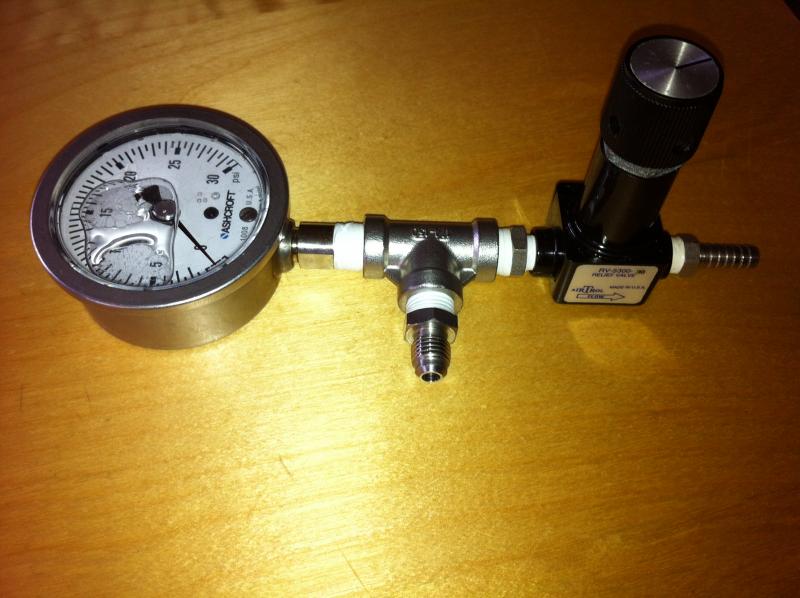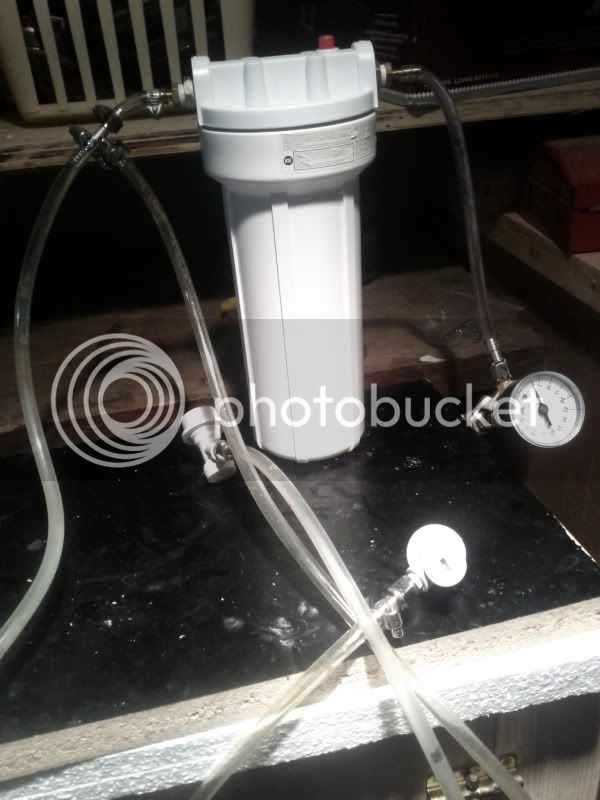A belated (but very enthusiastic) update:
Pressurized fermentation works great for bottlers, too!
My first pressurized batch didn't turn out so well, but only because of gross user error. I dry hopped with a stainless tea ball, but apparently didn't latch the thing properly because I ended up clogging everything with hop debris.
On the 6th of January, I brewed another batch, this time of my house brown ale. Ten days at fermentation temperatures, five days at 32, and then bottle directly from fermentor with a blichmann beer gun. It worked perfectly! The beer was cloudy for the first 12 ounces or so, but quickly cleared. It's two weeks from grain and I've got clean, perfectly carbonated beer in bottles ready to drink.
This is a standard recipe of mine, so I was able to do a side-by-side with a bottle that I did the traditional way. They were quite close, with no noticeable quality differences to speak of. What subtle differences there are all seem attributable to age. The pressurized batch seems to have a slightly cleaner yeast profile, though I suspect that I could just up the temperature into the low 70s if I wanted more esters.
All in all, I am thrilled, and completely converted. A summary of the perks:
* Time, obviously, is the huge advantage. Two weeks grain to glass, rather than five or six via bottle conditioning.
* The beer gets extremely little handling. I transfer from kettle to corny through my recirculation line, ferment in stainless, and then push through the beer gun. There are very, very few opportunities for contamination or oxidation.
* To oxygenate, I hooked up my welding bottle directly to the liquid post on my keg and bubbled some O2 through. I need to sit down and do the math, but filling the headspace to a particular pressure should give me a measurable and consistent level of oxygenation. This way uses a lot less of my tank, too.
* I'm only using my CO2 tank to drive the bottling and (if needed) to top off the carb level during cold crash. This saves me CO2, which is actually a reasonably big deal since I live in Manhattan and getting a tank refilled is a bit of a PITA.
I just ordered two more cornies and will be scrapping my better bottles as soon as they show up!
My only reservation is that it seems easy to over or undershoot target pressure levels if I'm not careful, especially since the spunding valve adjustment runs blind. I wonder how much something like this digital relief valve would run. With an accurate flowmeter, it might even be possible to accurately gauge the gravity of the fermenting beer without pulling a sample.
Pressurized fermentation works great for bottlers, too!
My first pressurized batch didn't turn out so well, but only because of gross user error. I dry hopped with a stainless tea ball, but apparently didn't latch the thing properly because I ended up clogging everything with hop debris.
On the 6th of January, I brewed another batch, this time of my house brown ale. Ten days at fermentation temperatures, five days at 32, and then bottle directly from fermentor with a blichmann beer gun. It worked perfectly! The beer was cloudy for the first 12 ounces or so, but quickly cleared. It's two weeks from grain and I've got clean, perfectly carbonated beer in bottles ready to drink.
This is a standard recipe of mine, so I was able to do a side-by-side with a bottle that I did the traditional way. They were quite close, with no noticeable quality differences to speak of. What subtle differences there are all seem attributable to age. The pressurized batch seems to have a slightly cleaner yeast profile, though I suspect that I could just up the temperature into the low 70s if I wanted more esters.
All in all, I am thrilled, and completely converted. A summary of the perks:
* Time, obviously, is the huge advantage. Two weeks grain to glass, rather than five or six via bottle conditioning.
* The beer gets extremely little handling. I transfer from kettle to corny through my recirculation line, ferment in stainless, and then push through the beer gun. There are very, very few opportunities for contamination or oxidation.
* To oxygenate, I hooked up my welding bottle directly to the liquid post on my keg and bubbled some O2 through. I need to sit down and do the math, but filling the headspace to a particular pressure should give me a measurable and consistent level of oxygenation. This way uses a lot less of my tank, too.
* I'm only using my CO2 tank to drive the bottling and (if needed) to top off the carb level during cold crash. This saves me CO2, which is actually a reasonably big deal since I live in Manhattan and getting a tank refilled is a bit of a PITA.
I just ordered two more cornies and will be scrapping my better bottles as soon as they show up!
My only reservation is that it seems easy to over or undershoot target pressure levels if I'm not careful, especially since the spunding valve adjustment runs blind. I wonder how much something like this digital relief valve would run. With an accurate flowmeter, it might even be possible to accurately gauge the gravity of the fermenting beer without pulling a sample.









